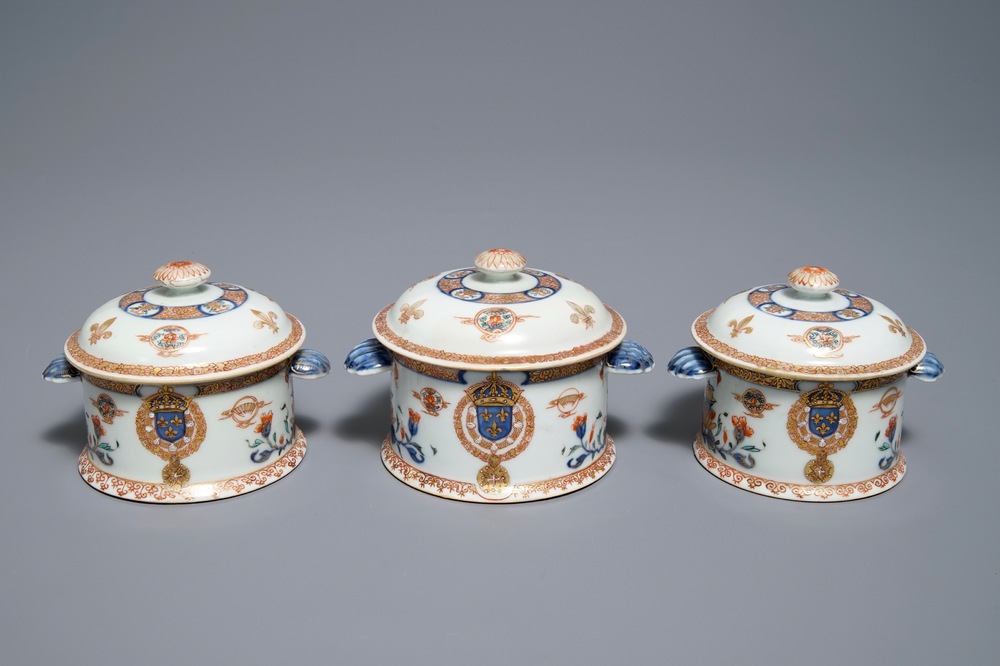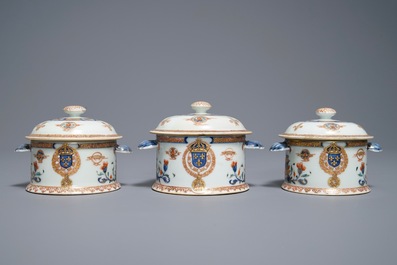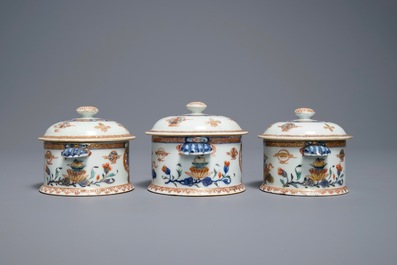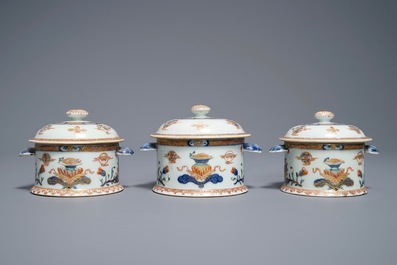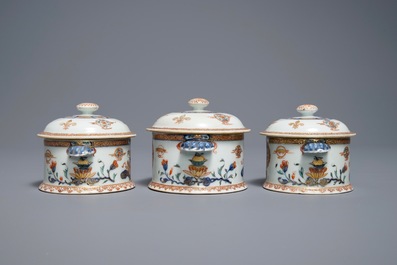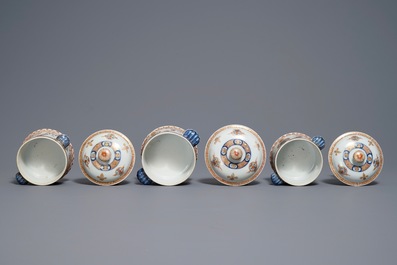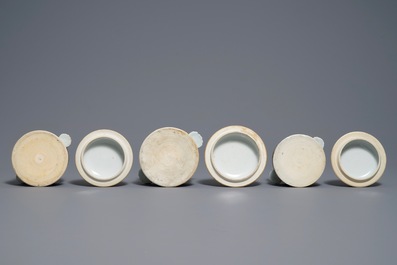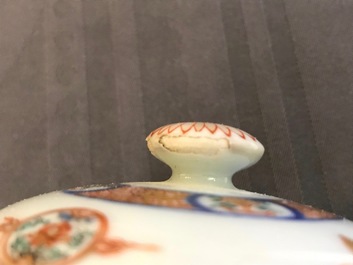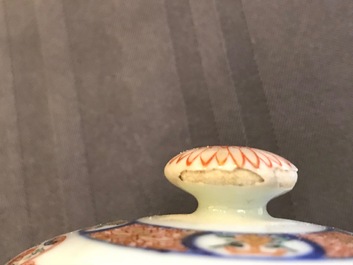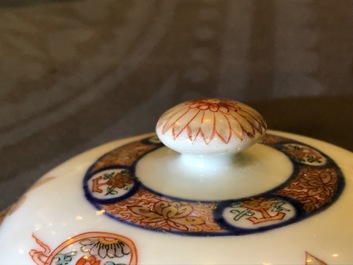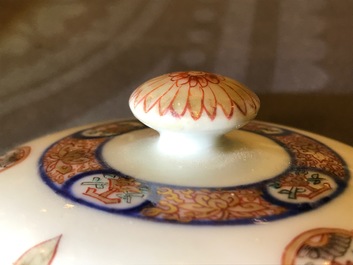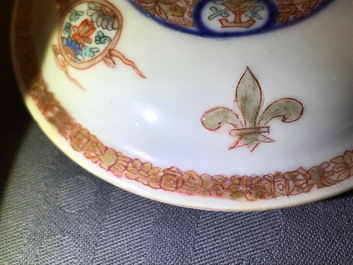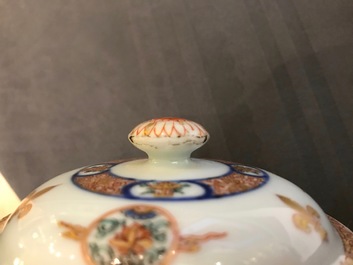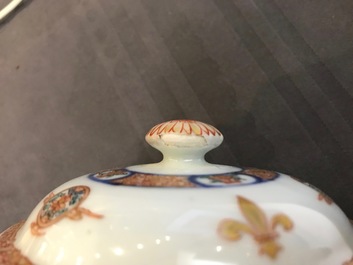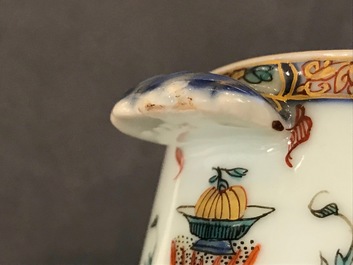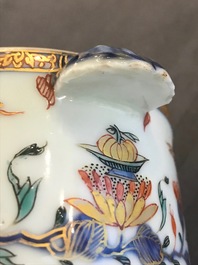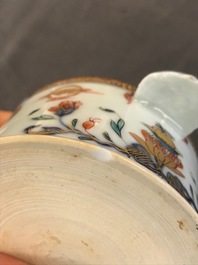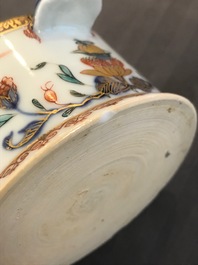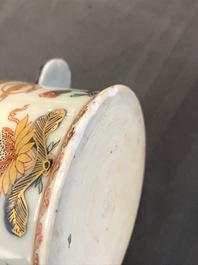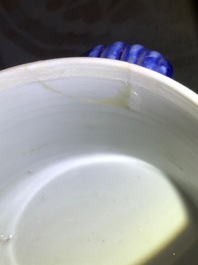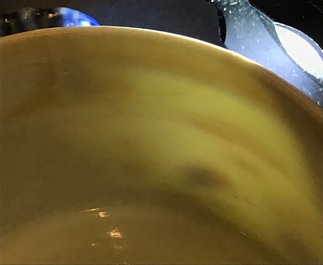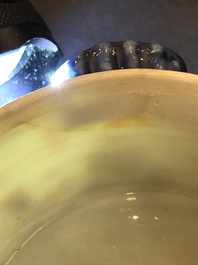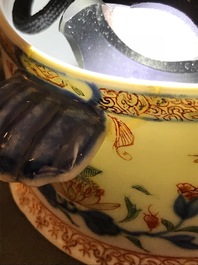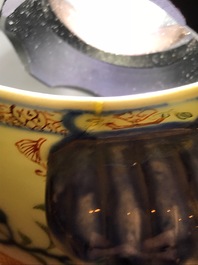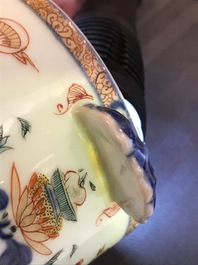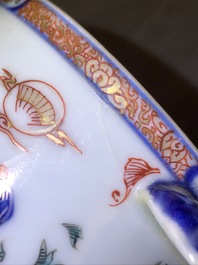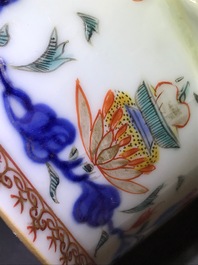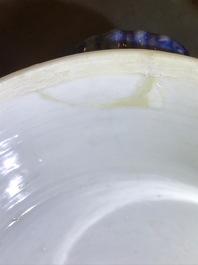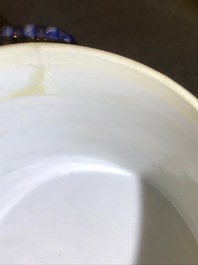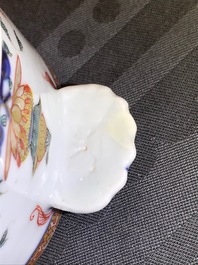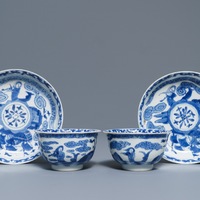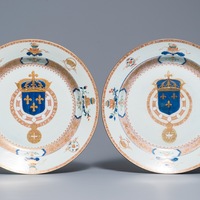We have to double-check your registration and make sure this is not an automated entry in our system. Please complete the test below...
Three round Chinese armorial tureens and covers from the service of King Louis XV of France, Yongzheng, ca. 1732
H.: 8,5 cm - L .: 13 cm
Condition: (UV-checked)
- The smallest cover in very good condition with three sections of glaze loss on the outer rim of the finial.
- The largest cover with restored glaze loss on the outer rim of the finial, the connection between the finial and the cover restored, overspraying visible under UV-light on app. 1/3 of the the outer section (below the floral band), probably disguising a break on the rim.
- The middle-sized cover in very good condition with glaze loss on the outer rim of the finial.
- The middle-sized tureen in very good condition with a small superficial chip to the underside of one of the lids.
- The smallest tureen with a superficial chip to the unglazed inner rim, with two and three small chips to the underside of the handles and a few small chips to the base.
- The largest tureen with a section of the rim broken out and restuck of ca. 6 x 1,5 cm, situated around one of the handles. A related hairline running down from the break towards the base. The other handle with a filled superficial chip on the underside. The foot with a retouched chip.
See also:
- Christie's, New York, 28 Jan. 2013, lot 492, for another tureen of this type from the same service. (link)
Emblazoned with the arms of the French crown surrounded by the orders of St. Michel and the Saint Esprit, this extraordinary set of tureens and the other related lots in this sale are from the service commissioned for Louis XV from the Conseil de direction de Canton. The order was probably executed in two parts, as Antoine Lebel's archival research has shown (French and Swiss Armorials on Chinese Export Porcelain, 2009), now believed by him and other scholars to have been in 1732 and 1738 (with a separate 1733 order for 12 matching bidets). Their rich iron-red, cobalt blue and white detailing recalls Japanese Imari porcelains by which they were, no doubt, inspired, and their forms reflect the very latest European fashion, soon to be made in European porcelain.
Although silver services would most likely have been used for official meals, the King and his private guests would likely have dined on this very grand Chinese porcelain in his newly constructed winter dining room on the third floor of the Château de Versailles. The service was in royal use until 1753, when Louis XV received his first, celebrated service from the Vincennes factory, after which time the Chinese service was first employed by officials in the King's court and then distributed among royal chateaux in Paris and its environs, much eventually descending in the Orleans branch of the royal family. See French historian Stéphane Castelluccio's new work on the royal inventories, including references to the service ("Le service de porcelain de Chine aux armes de Louis XV," L'Objet d'Art, April 2011, pps. 66-72). (source: Alain R. Truong - link)
